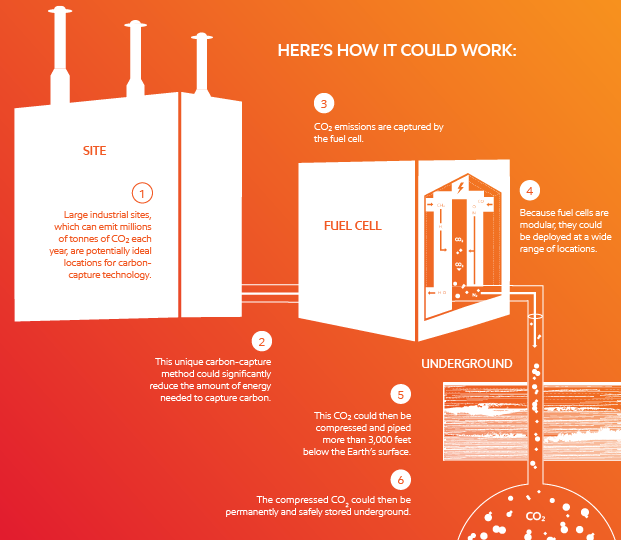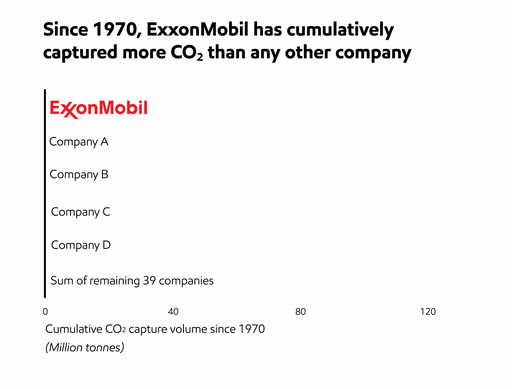Few technologies are considered by experts as more important to addressing the risks of climate change than carbon capture and storage, or ‘CCS’. Deployed at a large scale, CCS could significantly cut down greenhouse gas emissions. The International Energy Agency (IEA) says climate change scenarios, including the one outlined in the Paris agreement, can’t be achieved without applying CCS to power generation and other industries – and it’s an opinion shared by many.
At ExxonMobil, the need for CCS is well understood. Since 1970, we have cumulatively captured more CO2 than any other company – clocking up over 40 percent of all captured CO2(1). We now have a working interest in more than one-fifth of the world’s carbon.
To capture and store carbon dioxide at scale, specialist solutions are required. ExxonMobil is developing both capture technology and storage systems. In fact, we were among the early pioneers of both. Our aim is to reduce the cost, complexity and large initial investments currently associated with CCS technology, so that it can be more widely deployed and help reduce CO2 emissions from industry across the world.
One promising approach we have been focused on is the use of carbonate fuel cell technology. Fuel cells could capture CO2 from large industrial sites and power plants, while also making carbon capture more affordable.

Some carbon capture technologies are energy intensive, but fuel cells work differently. They capture carbon and generate electricity, offering the dual benefit of greater energy efficiency and lower carbon emissions.
We’ve recently announced a new partnership to develop another innovative carbon capture technology – with Global Thermostat. We’re working with them to further develop a system that literally vacuums CO2 out of the air! Meanwhile, we’ve also begun a collaboration with Mosaic Materials, whose breath-mint sized pellets efficiently absorb CO2 from emission sources.
Sleipner was the world’s first facility to store captured carbon in a saline reservoir below the sea bed.
When it comes to carbon storage, ExxonMobil has long been a pioneer. In the U.S., we operate a site in Shute Creek, Wyoming, that has captured more carbon than any other. And back in 1996, we partnered with operator Statoil (now Equinor) to bring the Sleipner platform online in the North Sea off the coast of Norway. Sleipner was the world’s first facility to store captured carbon in a saline reservoir below the sea bed.

There’s a lot of work to do to develop these technologies and successfully roll out scalable CCS solutions worldwide. Today we are looking for attractive new technology partnerships and opportunities to expand our CCS capacity, while advocating for policy measures that encourage the large-scale deployment of this important contributor to global efforts to reduce CO2 emissions.
But the possibilities of CCS are significant, and they are already capturing the world’s imagination.
Further reading:
- ‘What is CCUS?’ – International Energy Agency
- ‘CCS: its time has come’ – International Association of Oil & Gas Producers
Sources:




